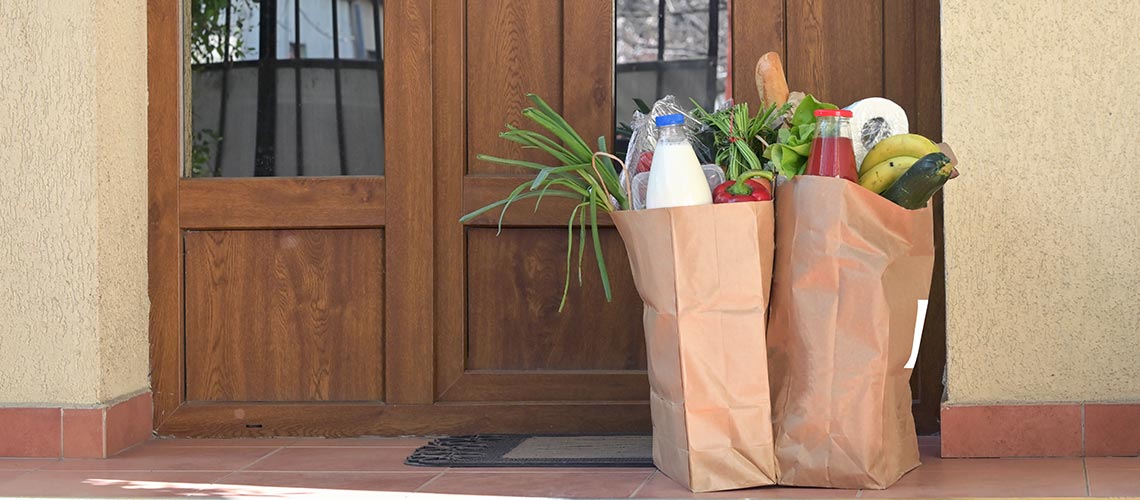Food-Retail Establishments: Creatively Supporting Customers and Employees during the COVID-19 Pandemic

The COVID-19 pandemic has unprecedentedly changed the world and how we do business. Many businesses have suspended operations due to government mandates or fears over spreading the coronavirus. However, essential industries such as healthcare, finance, and supermarkets have remained in service during this health crisis.
Supermarkets and grocery stores, eager to do their part in alleviating the crisis and flattening the curve, have adapted in ways that protect the safety and well-being of their employees and customers while also protecting their bottom lines.
Technology and Strategic Shifts Protect Customers While Promoting Sales
Many customers, consistent with stay-at-home orders, have chosen to order food – be it groceries or restaurant take-out or delivery – from online platforms. Ecommerce/click-and-collect has shown a significant surge in consumer adoption over the last few weeks. Online delivery system Instacart, available at nearly 25,000 stores in more than 5,500 cities in the U.S. and Canada, has rolled out a new “Leave at My Door Delivery” feature, allowing customers to eliminate contact or direct interaction with the delivery person when their order arrives. Such features help protect both delivery partners and consumers.
Food stores – seeing a large portion of their customer base opting for to-go or delivery orders to prevent the spread of coronavirus – have no choice but to remain nimble and adjust their marketing strategies and product offerings to match consumers’ buying behaviors. Several major grocery stores, including Walmart and Costco, have reduced store hours and, in an effort to observe social distancing guidelines, limited the number of shoppers in-store at any one time.
Restaurants have successfully implemented a number of strategies to keep customers coming back. Creative offerings include giving a future dine-in discount to customers who order take-out/delivery today; promoting take-and-bake items; or (for those with a sense of humor) giving out a free roll of toilet paper and hand sanitizer with each order. Some restaurants have even implemented expanded delivery zones and extended hours to attract more customers.
Protecting Employees
Now more than ever, food-retail business owners have needed to adjust their policies in order to keep their staff safe and healthy.
Wegmans has implemented enhanced sanitation protocols and created COVID-19 disability paid sick leave for employees to take care of themselves and their families. In addition, Wegmans accommodates vulnerable employees by offering them the option to move into different roles. Walmart is initiating the same policy with its emergency COVID-19 leave policy, encouraging employees to stay at home if they show symptoms of coronavirus, and making sure they have the support they need. Walmart is also installing sneeze guards for pharmacy and store registers to minimize contact and to protect both customers and employees from potential exposure.
Food delivery company DoorDash is distributing over a million health kits (including gloves and hand sanitizer) to its delivery drivers.
This pandemic has made a significant impact on the global food retail industry. We have had little time to respond and no choice but to adapt. The future of food-retail and other industries during these trying times may be uncertain but one thing is clear: The more we work together, the faster we can overcome this crisis.